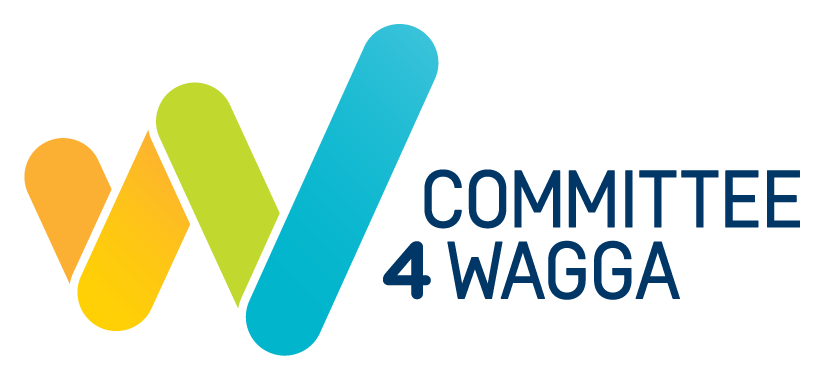Wagga Wagga Integrated Transport Strategy
Updated December 2020
Wagga Wagga City Council released the Wagga Wagga Integrated Transport Strategy and Implementation Plan 2040 in August 2017.
Key projects and initiatives contained within the comprehensive Plan include:
Assessing the infrastructure requirements needed to meet the future needs of the Northern growth area
Negotiate for duplication of the Gobbagombalin Bridge
Addressing parking capacity in the CBD area
Investigating an alternate heavy vehicle route from the Sturt Highway to the Olympic Way and review heavy vehicle current usage of existing northern infrastructure
Work with Roads and Maritime Services (RMS) to preserve a heavy vehicle bypass corridor south of the Sturt Highway within Council strategies
Negotiate a program with the NSW Government and Federal Government for timing of a heavy vehicle bypass
Provide a hierarchy of road networks that allow direct and efficient routes to and within Bomen
Improve intersections with the Olympic Highway in collaboration with the RMS
Work with RMS to improve intersections along arterial roads
Review the layout of key routes and analyse options for improved functionality, particularly the Glenfield Road/Person Street Corridor, Docker/Gurwood Street Corridor and Tarcutta Street
An Active Travel Plan for cycling and pedestrian movements
Improved public transport
In September 2020 Wagga Wagga City Council applied to have several roads within the city reclassified to Regional Roads to better reflect their role in the regional road network and utilise State Government funding for ongoing maintenance and repairs. For further details please click here.
Further to the release of the Wagga Wagga Integrated Transport Strategy and Implementation Plan 2040, in 2018 Transport for NSW initiated a Wagga Wagga Place Plan process.
Transport for NSW is working with Wagga Wagga City Council to develop a “Wagga Wagga Future Transport Place Plan”. Place Plans were a commitment in the Future Transport 2056 Regional NSW Services & Infrastructure Plan, released in March 2018. Their intention is to take a long-term integrated view of the future of transport in key regional places such as Wagga Wagga. The Wagga Wagga Future Transport Place Plan is informed by input from Wagga Wagga City Council, the RMS, Transport for NSW, other government agencies and invited stakeholders. Committee for Wagga was invited to participate in a Workshop held in February 2019 to have input into the development of the Plan.
The Wagga Wagga Future Transport Place Plan will provide the strategy for delivery of future transport outcomes by government for Wagga Wagga. The Place Plan is expected to be released in February 2021.
Committee for Wagga expects that there will be transparency as to how those significant projects contained within the Wagga Wagga Integrated Transport Strategy and Implementation Plan 2040 will be impacted in terms of timing of delivery and scope.
Background
Wagga Wagga City Council will finalise an Integrated Transport Strategy for the city in 2017 and Committee 4 Wagga have been active in providing feedback and recommendations during the development of the Strategy, most recently providing a detailed response to the Independent Peer Review published on Council’s behalf by MRCagney on February 20, 2017. C4Wagga is supportive of Council undertaking the development of an Integrated Transport Strategy and believes the document can be an important resource to facilitate growth and progress. In a 2017 survey of C4Wagga members, the Integrated Transport Strategy was rated as one of the city’s most important strategic documents. This emphasises the need to produce a collaborative, cohesive document planning for the infrastructure that is essential to support, sustain and ultimately encourage the city’s growth.
Significant congestion at key locations is currently constraining the city’s growth and it is important to recognise the need to plan and prepare to resolve these issues within documents such as the Integrated Transport Strategy. C4Wagga ’s submission focuses on the need to progress key infrastructure projects in conjunction with strategies such as changes to land zoning and planning policy. It is hoped the final document will incorporate the feedback and deliver a strong vision for the city’s transport networks.
The projects and initiatives supported by C4Wagga include immediately upgrading the Glenfield Road corridor encompassing the Dobney Avenue/Pearson Street roundabouts. The road is one of the most congested in the city and the main arterial route to and from the central business area for an estimated 8,000 residents, expected to grow to over 11,000 as residential areas become further developed. In addition, the Dobney Avenue roundabouts are becoming more and more accident prone as congestion increases.
C4Wagga’s submission highlights the need to begin planning for duplication of the Gobbagombalin Bridge and encourages Council to work with the NSW Government to identify funding sources. C4Wagga does not support the concept of discouraging residential growth in the northern suburbs to mitigate future demand on the bridge, as congestion on the bridge will worsen even if further development is limited.
The Integrated Transport Strategy is designed to guide the city’s transport related planning and investment until 2043, therefore it is highly important that a long term vision for the city is outlined, including projects such as a Sturt Highway alternate route around Wagga Wagga’s central business area. Our submission nominated the southern orbital route as the preferred option and we have encouraged this to be included within the Strategy to enable the preservation of road corridors for this project.
Key Stakeholders:
Wagga Wagga City Council
NSW Government
Federal Government
Committee 4 Wagga
Recommendation:
Consider and incorporate the priorities outlined within the C4Wagga submission to produce a strong vision for the city’s transport networks that will support, sustain and ultimately encourage the city’s growth.
